Are you a metal detector enthusiast who is looking to learn how to metal detect in rivers and lakes? Then you have come to the right place! Metal detectorists have been finding objects of all shapes, ages, and values from, Civil War buttons to the latest iPhone in rivers and lakes. However, because of the unique conditions that exist in these bodies of water, you must take care to effectively detect them. Below is a guide on how to do just that!
In this article, we’ll tell you everything you’ll need to know about metal detecting in rivers and lakes. We’ll discuss what equipment you should have, the best spots in both rivers and lakes to metal detect, what you’re likely to find and much more. So, if you’re considering metal detecting in rivers or lakes for the first time or want your detecting trips to be more successful, we promise this complete guide will help.
Acquire the Right Equipment
Countless metal detector hobbyists have found bounties of historic and modern treasures in rivers and lakes, making them favored locations to search. However, you won’t be able to find as much as a soda can in these conditions without the right equipment on hand.
The presence of water alone makes metal detecting in rivers and lakes very different from other popular locations, like parks and forest trails, and so, if you want to be successful here and go home with some fantastic findings, you’re going to need to bring key pieces of equipment.
The tools we recommend having include:
– A waterproof metal detector and pinpointer
– Navigational tools
– A shovel
– A long-handled sand scoop
– A high-powered magnet
– Gloves
– Trash and storage bags
– Goggles
While some of these tools are definitely more essential than others, we think it’s important that metal detectorists have all of them at their disposal when detecting in rivers and lakes, as they are guaranteed to make this process easier, more successful, and efficient.
Let’s discuss each of these tools in a bit more detail so you can understand why they are relevant and can potentially make or break a metal detecting search.
Waterproof Metal Detector and Pinpointer
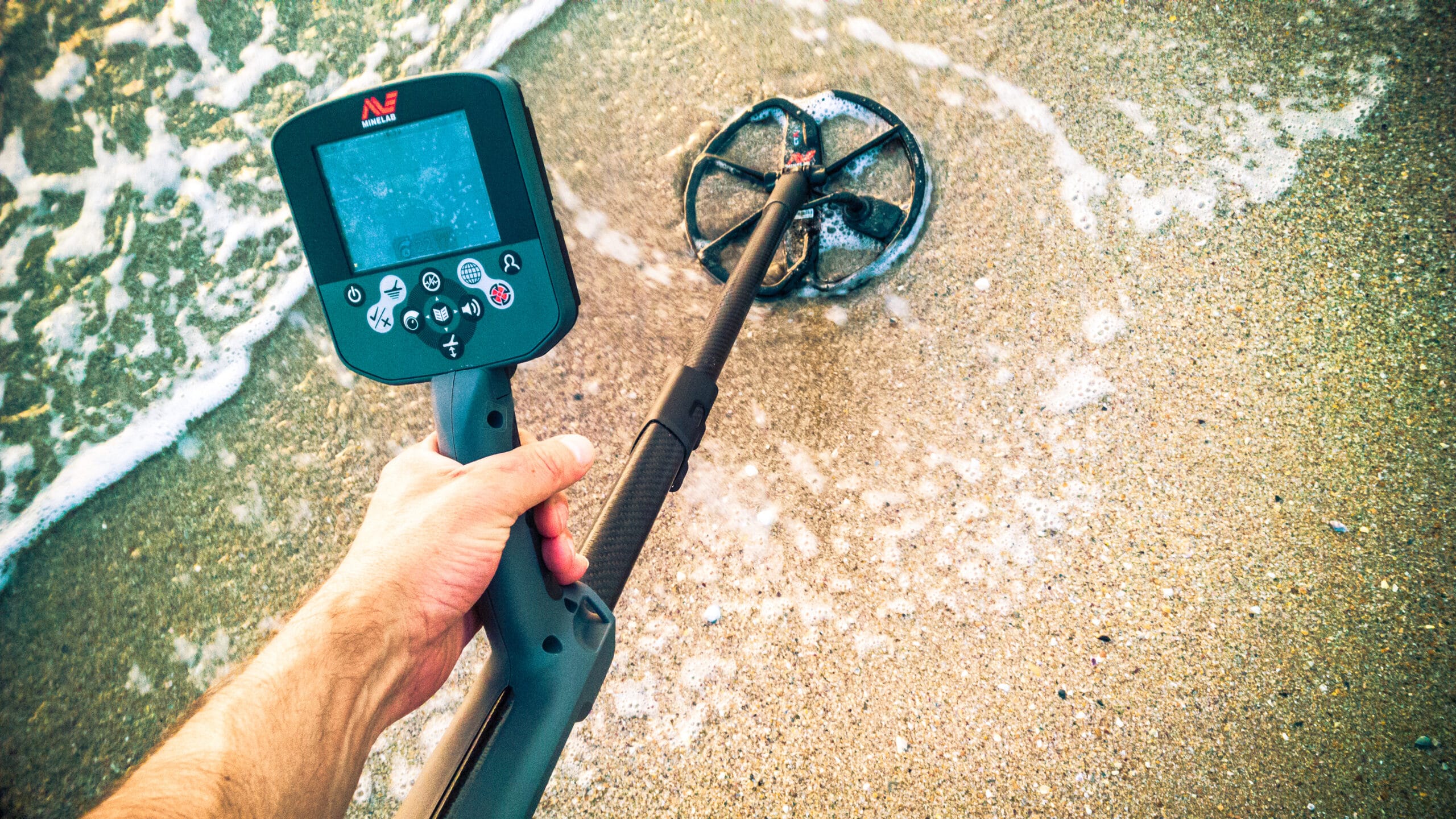
If there are any tools on this list you absolutely should not go to lakes and rivers without, it’s these two. Most metal detectors and pinpointers aren’t designed to be completely waterproof. Many might be water-resistant since coming into contact with some form of moisture is common in metal detecting, but that doesn’t mean they’re built to be completely submerged in water for excessive periods.
Therefore, if you were to take your trusty metal detector and pinpointer to a nearby river, odds are you are going to cause irreparable damage that might even harm you in the process if they short-circuit while you’re in the water.
Thankfully, there are a number of 100% waterproof metal detectors and pinpointers you can purchase for just this reason. Just make sure when you purchase a waterproof metal detector that the whole detector is waterproof, including the control box and stabilizer, not just the coil and shaft.
If you’re unsure of what type of metal detector you should get beyond one that is waterproof, we recommend a Very Low Frequency (VLF) metal detector, as these work best for freshwater hunting (nearly all lakes and rivers are freshwater).
Navigational Tools

Navigational tools like a compass, GPS, and maps are essential for the effectiveness of your session and your personal safety.
Metal detecting isn’t all about waving your metal detector along the ground and hoping to hear the magical beeps that indicate treasure. There’s a lot of navigation involved in this hobby to ensure metal detectorists can easily find the best spots for detecting and, most importantly, get back from them.
Traveling along winding rivers and oddly shaped lakes or down runoffs can be dangerous if you don’t know the area and have the means to keep your bearings. Additionally, rivers almost always flow south, which is important to know for locating crossings, fords, and deposits where you’re more likely to find objects, so having a compass on hand will become extremely useful when you’re unsure of which way to go.
A Metal Detecting Shovel

You’ll rarely find a metal detectorist traveling without some form of shovel or digging implement, as the majority of finds will be under packed dirt, vegetation, rocks, and other obstacles you won’t be able to easily remove by hand. Not to mention how tedious and inefficient it would be to constantly rely on your hands to treasure.
When it comes to metal detecting in rivers and lakes, you’re going to come across a lot of areas with tightly packed rocks (most likely near the shore) or thick layers of mud and silt. The best way to remove these is with a shovel of your choice.
There are numerous types of shovels you could bring, and honestly, the type you’ll want on hand will depend on where you’re metal detecting and what you’re looking for.
For example, if you’re detecting along the shore where there’s a lot of rocks, you’ll want a more heavy-duty shovel like a detecting trowel, or a U.S.-made entrenching shovel. However, if you’re wading ankle-deep or so in the water where there will be more mud and sand, you can get away with a smaller tool, like a towel or entrenching tool.
Long-handled Sand Scoop

If you only have room for one type of digging tool, we recommend leaving the shovels in your car and bringing a long-handled sand scoop along instead.
Sand scoops are fantastic tools that can function as both a digging tool and a sifter, making them optimal for water-based metal detecting sessions.
This is because metal detectorists who go to rivers and lakes are far more likely to search in the water than on land along the shore. Therefore, it’ll be far more beneficial to have a long-handled sand scoop you can use to scoop up a section of sand or silt underwater than to go digging for it with a shovel.
The sand scoop will be better at lifting the object and ensuring it doesn’t flow downstream or deeper into the lake while also removing all surrounding silt and mud so you can see the object more clearly.
High-Powered Magnet

Shovels and sand scoops are great, but sometimes the best tool for lifting finds out of the water is actually a high-powered magnet.
When metal detecting in water, there will be times you might be nervous about breaking out your digging tools because you don’t want to accidentally wash away the treasure. In these instances, we recommend using a high-powered magnet.
This tool will help pull any metallic object out of sand, silt, and water with ease, so you don’t have to submerge yourself to grab it or go digging for it. Of course, you’ll want to make sure whatever magnet you use for this job is also waterproof, so it doesn’t rust and corrode after a few sessions.
Gloves
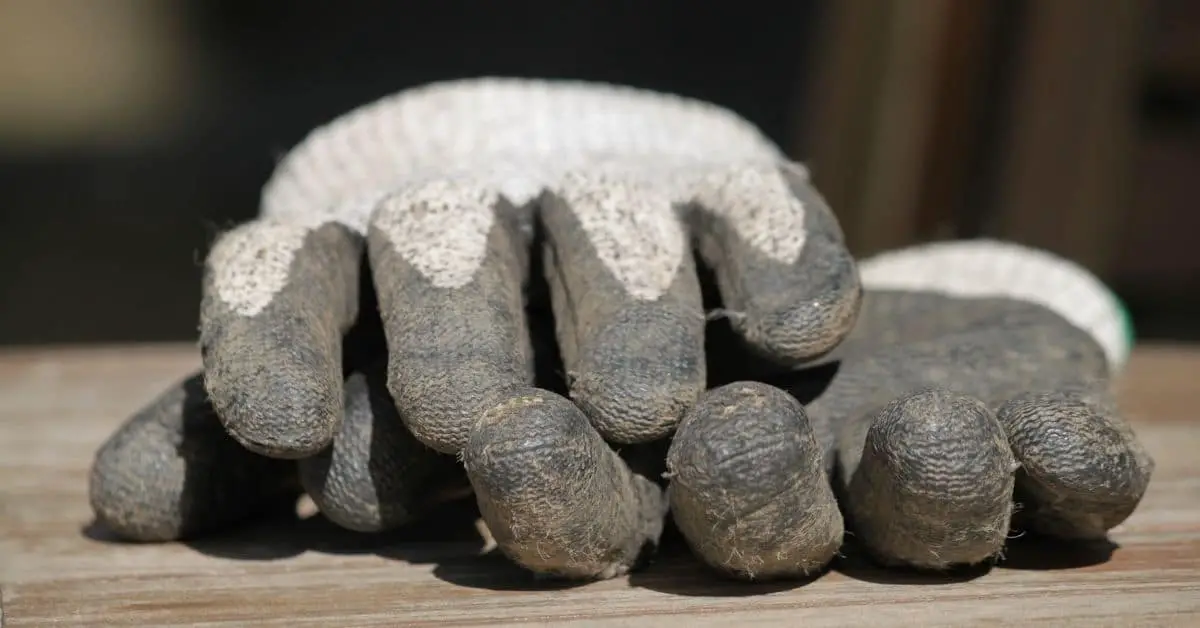
Many metal detectorists prefer to search the dirt for their find with their bare hands because it helps them feel and remove the object more easily. However, when it comes to metal detecting in water at lakes and rivers, we highly recommend wearing at least one glove.
The reason for this is that sometimes when you’re wading in water that is far from being crystal blue, you don’t always know what you’re grabbing for. That object that sets off your detector could be an old rusty nail or a sliced-up soda can, and the last thing you want to do is try to pull it up with your bare hand.
Instead, purchase a glove to wear on your non-detecting hand (so your detector doesn’t get dirty when you switch tasks) that has rubber along your palm and fingers. This will protect your hand from any surprises you might encounter under the water without inhibiting your search.
Trash and Storage Bags
These are pretty simple and obvious items you’ll want to have with you. The goal of metal detecting is to unearth long-forgotten objects, but you can’t carry them around in your hand, and placing them somewhere, like pants pockets, could lead to damage. This is why you’ll need some sort of storage bag.
In reality, you’ll probably need multiple storage bags:
– Waterproof bags for your findings
– A bag for your tools
– A bag for other necessities (ex., water, snacks, sunscreen)
If you have the space and the weight to spare, having trash bags on hand is always nice, as it gives you the opportunity to remove any garbage you find from these natural environments.
Goggles
Goggles are a tool for the more hard-core metal detectorist who don’t mind getting down and dirty in the water.
There’s no denying that the best way to make finding and freeing objects underwater easy is by visually looking at them. Of course, not many people enjoy the idea of wading in a not-so-clean river or lake, dunking their head underwater, and opening their eyes. Ergo, goggles.
These are light-weight objects you can wear on your head that will make your metal detecting infinitely easier and reduce the odds of accidentally losing track of objects.
Wear Weather and Detecting-Appropriate Clothing
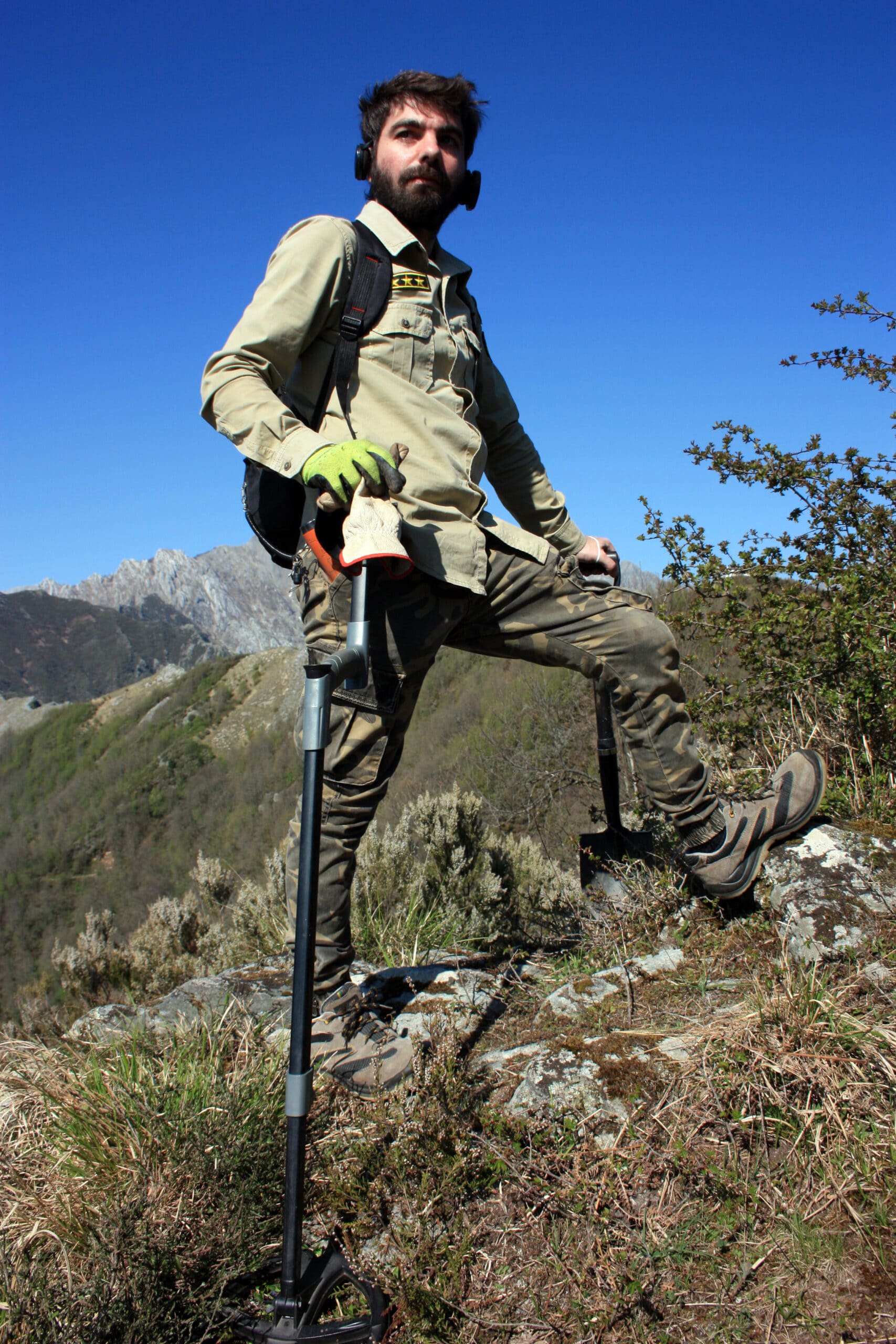
Having the right tools for your metal detecting session in lakes and rivers will undoubtedly give you the best chance of success, but there’s another element of preparation you’ll want to consider as well: you’re clothing.
Before you leave for the water, make sure you’ve dressed appropriately for both the weather and wet conditions. Items we recommend you wear include:
– Windbreakers
– A hat
– Long pants for buggy or highly vegetated searches
– Shorts of shore-based searches
– Fast-drying socks
– Tall, waterproof boots with good grip
Each of these pieces of clothing will help you stay comfortable during long metal detecting sessions, and some can even keep you safe. An example of this is having boots with good grip since walking in water can be slippery, dangerous work.
Bugs are also something you’ll want to think about since many are attracted to swampy/wet environments. Therefore, besides wearing a hat, you might want to have a bug net to keep them away from your face and pair it with all long-sleeved clothing.
Have a Metal Detecting Goal In Mind
By now, you might be thinking your preparation process is over, but it’s only just begun. Once you’ve acquired all the proper tools and attire that will make metal detecting in lakes and rivers possible, you need to start planning the session.
The first step to planning a metal detecting session in rivers and lakes is to create a clear goal. This can be as simple as wanting to find a piece of jewelry or exploring a specific region you’ve been curious about for a while.
Regardless of what it is, you’ll need a reason for going metal detecting, as this will affect where you go, what tools you bring, your research, and several other factors.
For example, if you want to find historic relics, you’re going to want to find locations that were settled in America’s earliest years and have been frequently traveled since. Lakes and rivers near old foundations, settlements, and homesteads are great for this.
Alternatively, if you’re intent on finding gold, you’re going to be headed to a completely different location (most likely a river, not a lake).
Having a goal can help you pinpoint potential metal detecting locations easier and find ones with a higher chance of success rather than scanning all of the lakes and rivers near you and trying to find a way to narrow down the list.
Research Potential Metal Detecting Rivers and Lakes
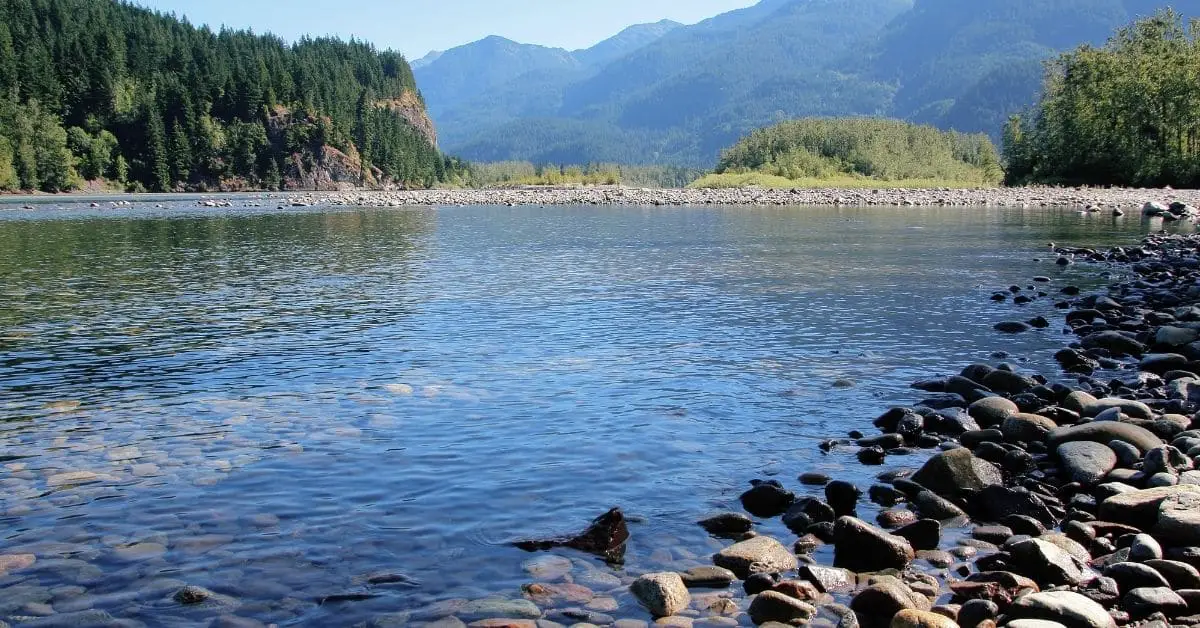
With your goal in mind, it’s time to do some research, and no, you can’t skip this step. While it isn’t always the most fun part of the process, researching potential metal detecting rivers and lakes is necessary.
Researching metal detecting sites along and in rivers and lakes is essential to your trip’s success, as it will provide you with invaluable information that will help you choose the spots with the highest potential. It is also important to be familiar with the region you’re going to metal detect in before you arrive for safety purposes.
When researching a potential metal detecting site, you should answer questions such as:
– Does this area allow metal detecting?
– What is this area’s history, and how will this affect what I’m likely to find?
– What are this river or lake’s water movements and tides?
– When are these locations busiest?
Knowing this information will ensure you choose a location that aligns with your goals, and you’re there at the optimal time to find something. It also will guarantee that every river or lake you go to for metal detecting is worth your time.
Go When the Time is Right
You know where you’re going and what you need; the next question is when you should go metal detecting at rivers and lakes. While you can visit these locations nearly year-round, there are times when your potential to find treasure increases substantially.
The best times to metal detect in lakes and rivers are:
| Lakes | Rivers |
| · After a large storm· When old attached or nearby swimming holes are shallow· Early in the morning before the beach is crowded (good for searching the towel line if the water is still high)· During low tide | · After a large storm· After a large surge in river flow· During dry spells where the riverbed is exposed (hot summer and cold winter months are great for time to optimize on this)· When water has been blocked or diverted from the main source |
All of these times center around when fewer people are present to get in your way or when the lake or river’s water has either moved or receded. This can unearth and move objects into new, more easily accessible locations or allow you to metal detect along land that is usually too far underwater to search.
Choose The Best Location Along, In, or Around the Lake/River
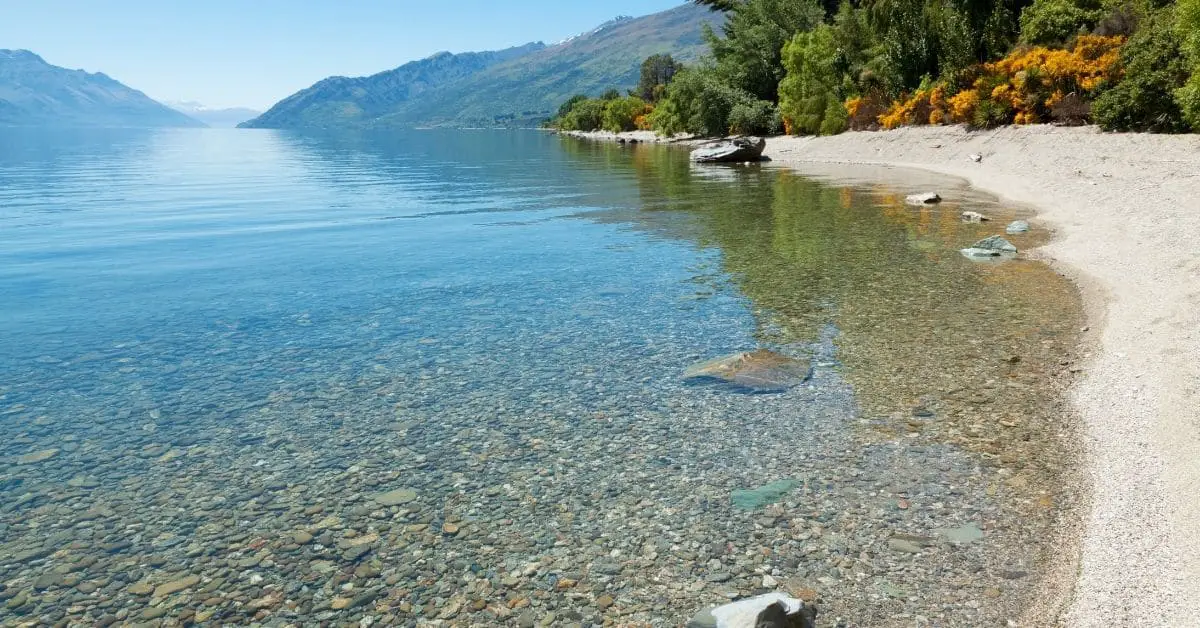
The next step to metal detecting in rivers and lakes is picking the right section to search in. As much as we’d like to spend every minute of every day searching these bodies of water for astonishing treasures, it just isn’t realistic, so we need to optimize on every chance we have. The best way to do this is to know the best parts of rivers and lakes to search, that will likely hold the objects that match your metal detecting goal.
Different sections of rivers and lakes are optimal for finding specific objects and natural materials. While this definitely pertains more to rivers than lakes, as there are various stretches along rivers where water flow and levels will vary, knowing the lake you intend to search is always useful information to have.
Below are charts of common items metal detectorists will look for and where they’re likely to find them in a river or lake.
Rivers:
| Materials/Objects | Where to look |
| Historic relics | · Under old bridges· Along shallow crossings and fords· Along intersections with old pioneer trails· Near old settlements |
| Gold and silver | · Sand dunes in river bends· Downstream from known locations of gold-bearing quartz rock or silver deposits· Sand dunes where the river widens out from being a narrow stream |
| Coins and jewelry | · Under all bridges and overpasses· Under popular vista points and lover’s leap locations· In the shallow outskirts |
Lakes:
| Materials/Objects | Where to look |
| Historic relics | · Deeper waters where fewer people dive to metal detect (will need special equipment for this)· Where the shoreline would have been during the time period you have in mind· Under the deepest part of docks |
| Gold and silver | · Along the shoreline· Sand dunes in lake bends |
| Coins and jewelry | · Water pools· Along docks· Along the shoreline |
As you can see, typical objects like coins, jewelry, and everyday accessories are usually relatively easy to find in any shallow area of lakes or rivers. However, if you’re hunting for older and more historic objects, it’ll do you some good to really research the region and see how the lake or river was used years ago and how it has changed since to find the best spots.
Travel With Caution
While you’re wading around waist-deep in lake and river water, there’s something we’d like you to keep in mind other than the joy and adrenaline you’re going to feel when you find something.
Metal detecting in water like lakes and rivers is far more hazardous than most locations, so it’s important to do this slowly, patiently, and with as much caution as possible. Your safety is far more important than anything you’re going to find.
There are a number of potentially dangerous factors you’ll want to be conscious of when metal detecting in these bodies of water, such as:
· Unstable, sharp, or slippery rocks
· Quicksand
· Strong currents
· Cold temperatures
If you go wading into the water without planning for these hazards first, you risk slipping and falling which could result in serious injury, being carried away by currents, or getting stuck in quicksand which could lead to drowning or causing hypothermia from overexposure to freezing waters.
To mitigate this, do your research about where you want to metal detect and keep a close eye on temperatures and currents.
If you’re metal detecting in an area where the current is strong, don’t wade any deeper than ankle height in the water and never enter these environments during cold conditions without proper protection. Having your cell phone on hand is also important so you can contact help in the event of an emergency.
Remember Metal Detecting Ethics

This last step is specific to metal detecting in lakes and rivers, but metal detecting in general. It only takes a few metal detectorists who trespass on private or federal land or leave a series of holes in the ground to give all metal detectors a bad name. You don’t want to be one of these people, so make sure you remember basic metal detecting ethics when you’re out exploring.
The key metal detecting ethics to remember are:
· Fill in any holes you create when searching
· Take anything you find
· Search in the least intrusive way possible
· Never leave litter and always try to remove any trash you come across
· Always make sure you have the appropriate permits and permission to metal detect in your chosen location
· Always report items of significance to the appropriate source (ex. historic relics to a local historian or museum and lethal weapons or toxic items to local authorities)
By following these ethics, you’ll be an ideal ambassador for all metal detectorists and help the hobby live on by demonstrating it can be done in a safe and respectful manner that improves the environment rather than harming it.
How To Metal Detect In Rivers and Lakes Summary
Now you should have a full idea of what you need and how to go about metal detecting in rivers and lakes. Rivers and lakes can hold a treasure trove of artifacts, jewelry, coins, and other relics that you normally wouldn’t find on land. Enjoy getting out there and metal detecting just remember to use safe practices when out on any body of water.
Until next time Happy Treasure Hunting!
